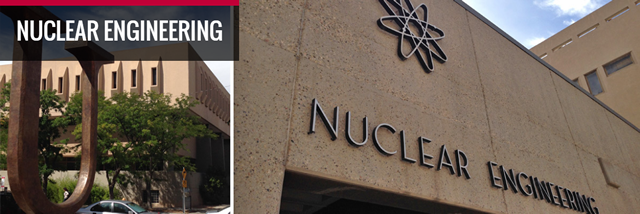
Nuclear Engineering ETDs
Publication Date
Summer 7-17-2017
Abstract
The focus of this work is the characterization of a typical neutron time-of-flight (NTOF) detector that is fielded on inertial confinement fusion (ICF) experiments conducted at the Z-experimental facility with emphasis on the Magnetized Liner Fusion (MagLIF) concept. An NTOF detector consisting of EJ-228 scintillator and two independent photomultiplier tubes (PMTs), a Hamamatsu-mod 5 and Photek-PMT240, has been characterized in terms of the absolute time and energy response. The characterization was done by measuring single, neutron-induced events in the scintillator by measuring the alpha particle and neutron produced from the D-T reaction in kinematic coincidence. The results of these experiments provided the time dependent instrument response function and the detector sensitivity as a function of applied voltage covering the entire dynamic range of the detector. Historically, impulse response functions have been measured using various photon sources as surrogates for a neutron source. Thus, this measurement using a single hit neutron source results in the most accurate measured response function, which will improve the accuracy of impulse response corrections to the NTOF signals.
While this detector has not yet been fielded on any MagLIF experiments, the development of a predictive capability was desired for transferring the measured detector response from the calibration geometry to the more complex Z geometry. As a proof-of-principle, a detailed model of the Z-machine was developed in MCNP6 to correct for geometry issues when transferring the calibration results from a light lab setting to the Z-environment. Representative values for the instrument response function and the sensitivity for the current detectors fielded on MagLIF experiments were convolved with the modeled results. These results were compared with data collected on three previous MagLIF experiments. The comparison shows the model results can be used to constrain three parameters that are relevant for diagnosing the plasma performance and confinement – the plasma ion temperature, the beryllium liner areal density, and the neutron yield – which significantly enhances the information that can be obtained from the Z NTOF signals. The model also clarifies the source of features that have been observed in the NTOF signs that were not well understood before. In addition, this capability and methodology can be used to re-design the source to detector lines-of-sight such that the magnitudes of the required corrections are minimized.
Keywords
MagLIF, neutrons, time-of-flight, scintillator decay, MCNP, fusion
Document Type
Dissertation
Language
English
Degree Name
Nuclear Engineering
Level of Degree
Doctoral
Department Name
Nuclear Engineering
First Committee Member (Chair)
Gary Cooper
Second Committee Member
Adam Hecht
Third Committee Member
Mark Gilmore
Fourth Committee Member
Carlos Ruiz
Recommended Citation
Styron, Jedediah. "TIME AND ENERGY CHARACTERIZATION OF A NEUTRON TIME OF FLIGHT DETECTOR USING A NOVEL COINCIDENCE METHOD FOR CONSTRAINING NEUTRON YIELD, ION TEMPERATURE AND LINER DENSITY MEASUREMENTS FROM MAGLIF EXPERIMENTS." (2017). https://digitalrepository.unm.edu/ne_etds/62


